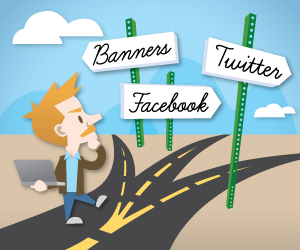 Paid, earned and owned media are integral parts of any brand’s media strategy. While owned and earned media have flourished during the evolution of the marketing and advertising landscape in the past two decades, paid media has had a tumultuous ride. It has been the catalyst (broadly speaking) for obnoxious and interruptive advertising—pre-roll ads, billboards, banner ads; the kind of advertising we love to point out and lambaste—which makes it an easy target for ridicule by marketers trying to sell owned- and earned-media strategies into brands. But is it fair to ship paid media off to the Island of Misfit Toys? Is it a big mistake to ignore an effective paid-media strategy?
Paid, earned and owned media are integral parts of any brand’s media strategy. While owned and earned media have flourished during the evolution of the marketing and advertising landscape in the past two decades, paid media has had a tumultuous ride. It has been the catalyst (broadly speaking) for obnoxious and interruptive advertising—pre-roll ads, billboards, banner ads; the kind of advertising we love to point out and lambaste—which makes it an easy target for ridicule by marketers trying to sell owned- and earned-media strategies into brands. But is it fair to ship paid media off to the Island of Misfit Toys? Is it a big mistake to ignore an effective paid-media strategy?
The Role of Traditional Advertising in Post-Advertising
You can’t blaze a trail without wielding a knife, and the Post-Advertising movement has, on occasion, taken aim at the traditional, interruptive means of advertising. But I fear that the Post-Advertising perspective on the role of traditional media has been misunderstood.
Make no mistake: We still believe that the notion that you can find out where your target audience will be, turn up there uninvited, interrupt what they are doing and badger them with your messages is over. This brute-force method is dying rapidly, and, in its place, the storytelling approach is spreading. In simple terms, traditional advertising has been rapidly losing effectiveness, while the audience for and effectiveness of nontraditional marketing have multiplied geometrically.
Over the past ten years, consumers have gained dramatically in terms of choice in and control over the media they consume. As a result they watch, read, listen to and interact only with the content that interests them. When brands are utilizing paid media, it’s imperative that they figure out how to distribute their content in scalable ways that get that content to the right audiences in the right context at the right time. When used effectively, paid media illuminates the content, experiences and conversations pertaining to a brand, like the match that starts the roaring fire.
The Application of Paid Media
In October 2010, Story CEO and Post-Advertising contributor Kirk Cheyfitz wrote an article about the roles of paid, owned and earned media in advertising’s future. Considering the new opportunities that brands now have for utilizing paid media to acquire and engage with brand “fans,” the article may be more relevant today than it was then.
“Paid media works, but only so long as the money spigot is turned on and gushing,” Cheyfitz wrote. “Stop spending and paid media stops working, with little or no residual benefit. Put another way, the meter is always running, and no matter how far you ride, you never own the taxi.”
Paid media does have a place in the world of Post-Advertising, but like any tool, it can be used to create or to destroy. It’s the application of the tool that will set your brand apart. An effective content-marketing strategy will define exactly how the paid-media spend will fuel the growth of owned and earned media so that more of the budget can be invested in the creation of content that audiences seek out. If the strategy focuses only on how paid media will result in a brand’s end goals (e.g., buying billboards in the hope of selling cars), we’ll be left with the spigot that Cheyfitz outlines above .
Tying Goals to Strategy
GM’s recent Facebook ad pull has highlighted this uncertainty in paid media’s role. The brand allegedly pulled what was reported to be a $10M spend from the social-media platform because it couldn’t tie specific revenue to the ad buy. But Facebook’s advertising platform is most effective when used for long-term equity building; that is, helping make your audience aware of the places (among them, often your brand’s Facebook page) where you are sharing content that the targeted audience will find valuable. People don’t go to Facebook to search for a car, but if there’s a constant stream of credible, useful content coming from a car brand, those users may think of that car brand first whenever they are ready to buy.
There’s no question that various paid-media avenues result in various levels of marketing effectiveness. It wouldn’t make sense to commit the same percentage of a brand’s paid-media budget to Facebook that it does to people who spin signs on the side of the road. The evolving ability of digital platforms to segment and target audiences is what’s both keeping paid media very much alive and diminishing the effectiveness of mass, interruptive means of advertising, like billboards and commercials. Brands must understand which paid-media avenues are best for them and how to utilize those avenues to spark the owned- and earned-media flame.


